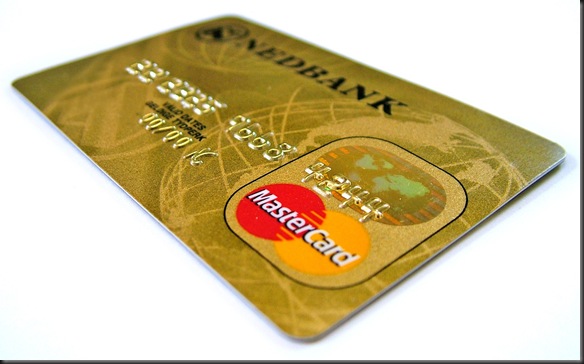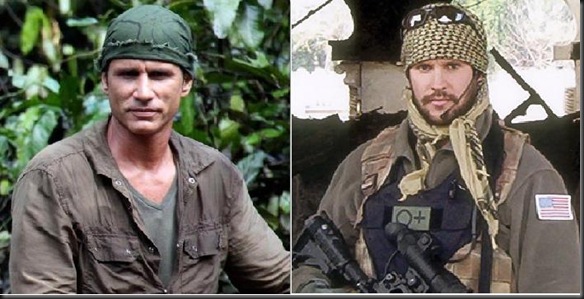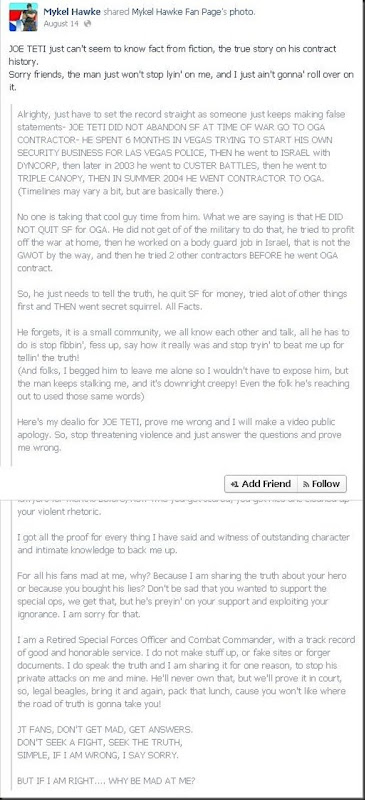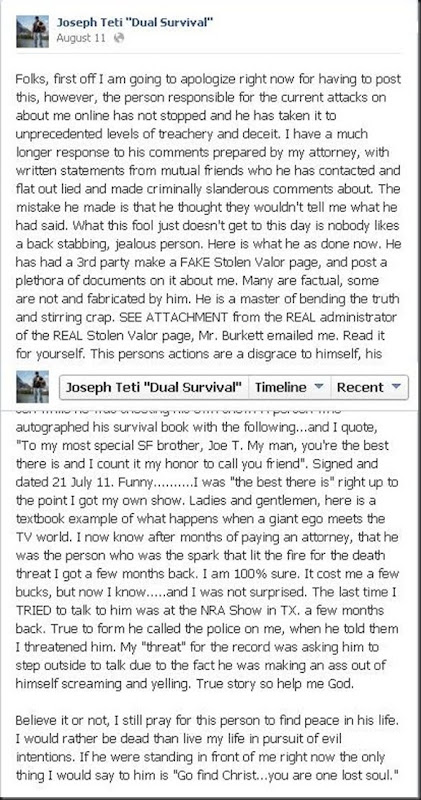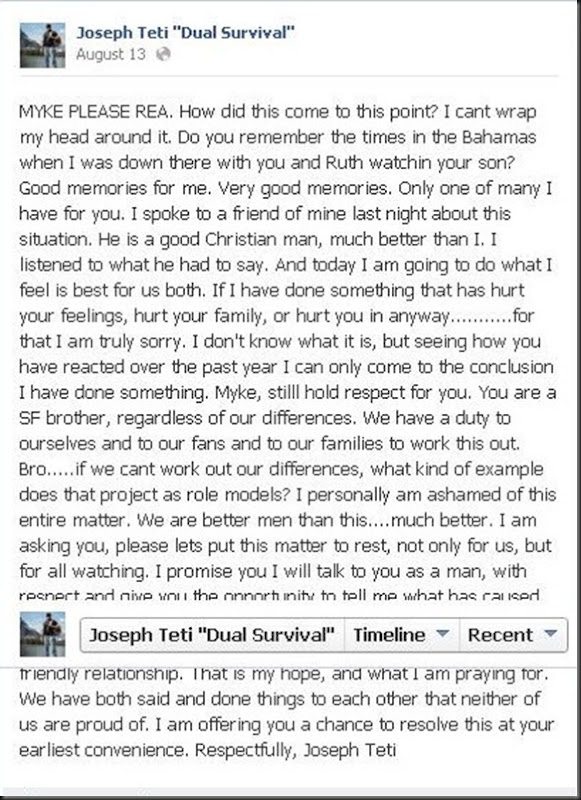For some time now, during my research of different mountains here in NY, I’ve been seeing some sporadic pictures of ruins surrounding Pine Meadow Lake in Harriman State Park. Through some reading, I pieced together that there were two sets of ruins in those mountains. The first was what people refer to as the Conklin Cemetery, and the second, the Pine Meadow Lake Pump House Ruins.
The history of the area that I was able to find goes a bit like this: In 1779 the Conklin family came to this area in the mountain. At the time there was no lake there, but was rather a valley. They built a house, farm, etc. What has come to be known as the Conklin cemetery was the burial site for members of the family. Over the years the land gets transferred several times. In 1935 the Civilian Conservation Corps floods the valley, creating Pine Meadow Lake. Several structures are constructed for the task, and abandoned after the lake is created. In 1963 the land is acquired by the park.
So, I decided to go to the lake and see what I could find. I would mostly follow trails, except for when I reached the lake. My plan was to travel along the southern side of the lake, where the Conklin cemetery was supposed be located. After passing the lake, I would camp in the vicinity of a lean-to shelter. The next day I would return along the northern side of the lake where the pump house ruins are located. The southern section of the lake would require bushwhacking.
The trip started out following along a river, which would take me a good part of the way to the lake. Just like last time, I had with me my trekking poles, which have been proving to be very useful.
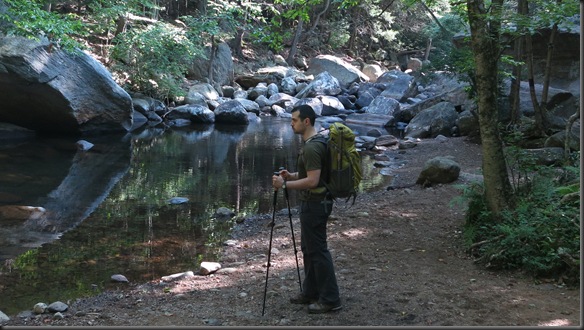
There were some mushrooms along the trail.
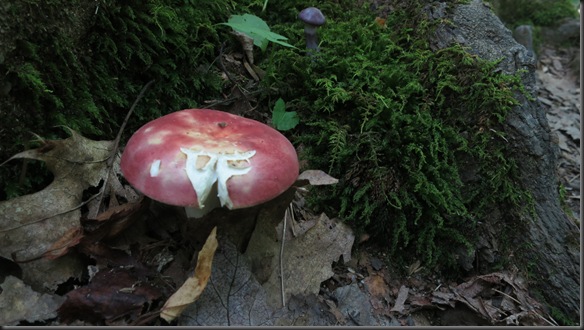
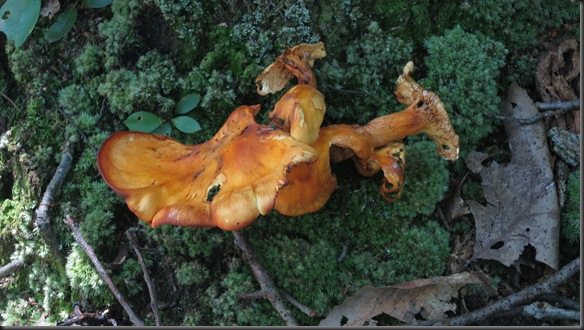
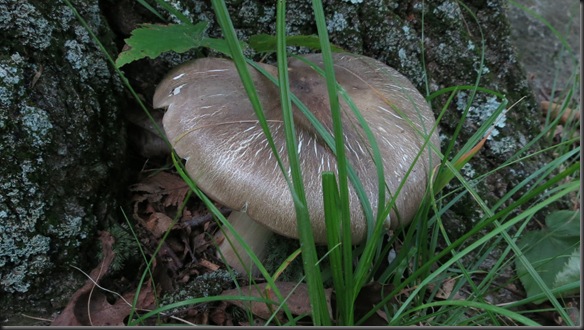
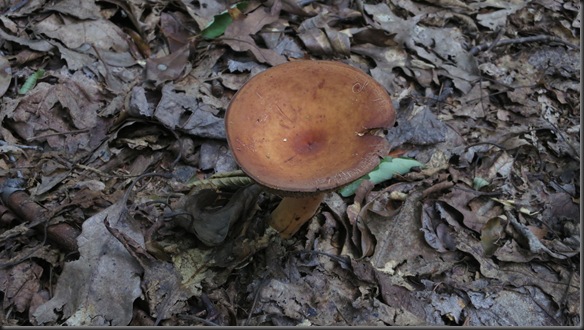
… and a frog…
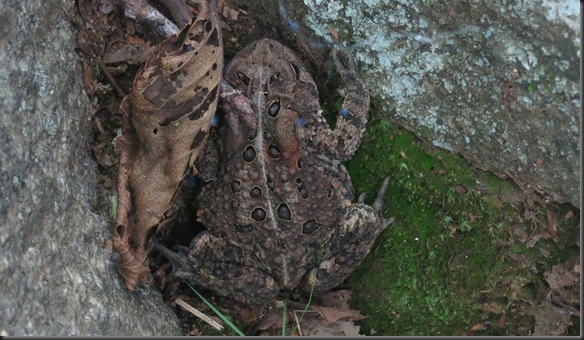
For those of you who may be interested in repeating the trip, I started from the parking are on Seven Lakes drive. I then followed the Red trail to the White trail, to the Black trail over Raccoon Mountain, and then a short piece of Yellow trail, which got me almost next to the southern section of the lake.
There was some good climbing up Raccoon Mountain. I am still getting used to doing it with the trekking poles. It’s actually not bad, offering good balance points.

After reaching the summit, I descended down the Block trail until I reached a short section marked as Yellow. I followed it briefly until it ended in an unmarked path that seemed to follow along side the lake. I started following it, but it soon started moving away from the lake. From what I knew, the cemetery was right next to the lake, so I decided to bushwhack along the coast. That was easier said than done. The are was so overgrown with dense vegetation that moving was impossible in most areas. I zigzagged through the bushes, following whatever game trails I could find. On the upside, some of the huckleberry bushes had started to produce fruit.
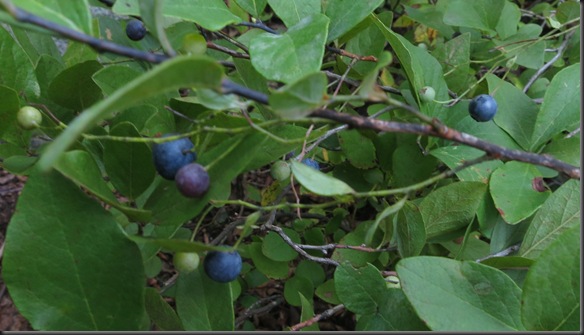
After spending quite some time in the area, I gave up on trying to find the cemetery. I figured the undergrowth was too thick and everything would have been covered up. I could be ten feet from a monument and I wouldn’t know it. I just pushed ahead along the lake in an effort to intersect a trail and follow it up the mountain where I would camp.
However, just as I was getting frustrated that I couldn’t locate the site, I emerged into a small clearing in the brush. It was the Conklin cemetery.
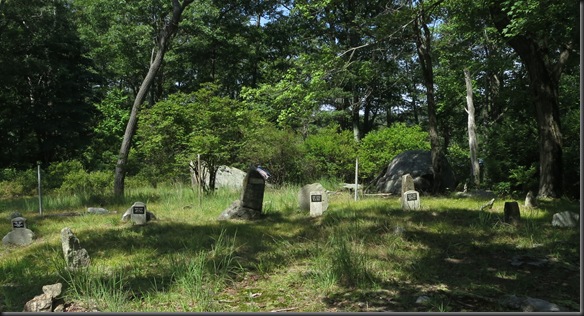
It was a small area, that had clearly been maintained. At first I wasn’t sure how anyone had reached it at all, but that I noticed that there was a small trail leading out the other end. Eventually it proved to lead out to the unmarked path on the side of the lake.
The older head stone I was able to find was of Ezekial Conklin, who served in the Orange County Militia during the Revolutionary War. He died November 29, 1811.
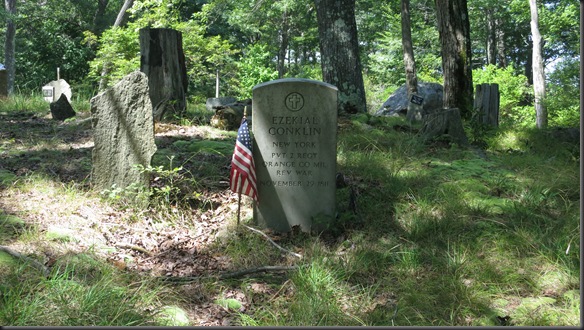
I followed the small path out of the cemetery heading due east. I soon reached another opening in the woods under a group of large pine trees. A bit to the side, I noticed the remnants of an old shed of some sort. I assume it was used as part of the pump station.

I decided to stop at this spot and have lunch. I noticed that on all of the pine trees were remnants of the exoskeletons of what appeared to be cicadas.
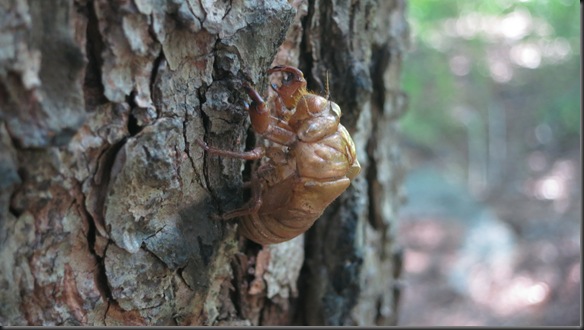
I figured I would stay away from the upright pines and found a nice rock to sit on.
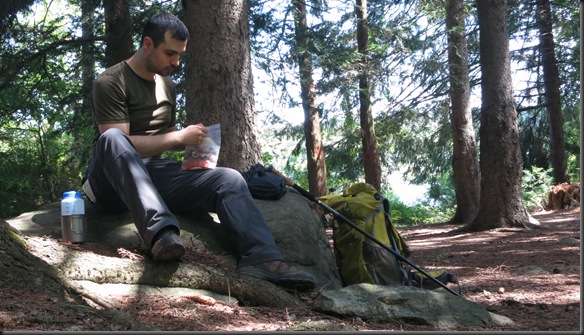
I’ve been experimenting with different foods, so today for lunch I had some tortillas with pepperoni and a mixture of bacon, dried tomatoes and parmesan cheese. I also brought some ketchup in a small hand sanitizer bottle. Very happy with the results.
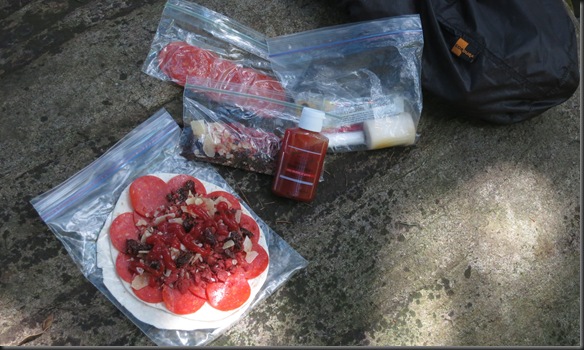
When I was done with lunch, I decided to spend some time by the lake. I was making good progress, and since I had brought my fishing kit with me, I decided to try my luck. After looking around for a bit, I found one location where I was able to reach the water through the bushes. I set up, tied a roostertail to my line, and on the first cast I hooked something.
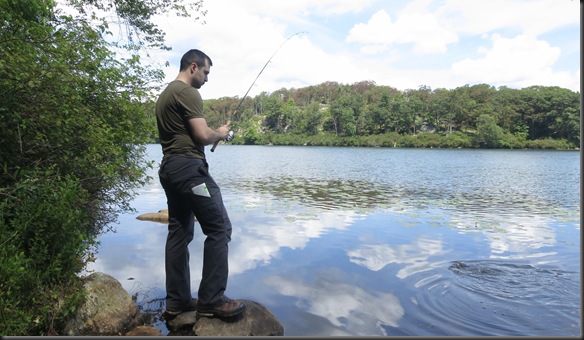
It was an eight inch Blue Gill. They are not particularly good eating, and have a lot of bones, but will do for dinner in the woods.
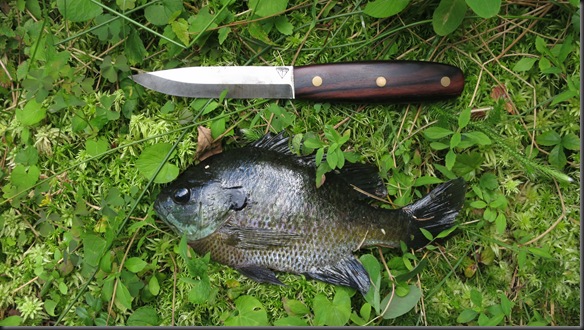
Since luck was on my side, I figured I would try for a few more. On the second and third cast I ended up hooking the lilies and losing the lures. I decided to cut my losses. I gutted the fish and stored it in a plastic bag from lunch. I then set out again.
At first my plan was to follow along the lake. I was about half way along it by this point. Unfortunately the same old problem popped up. The brush was too thick to move through. I again started following small unmarked paths, until I reached a decent size one. Along it there were several ruins, which appeared to be from the pump house complex.
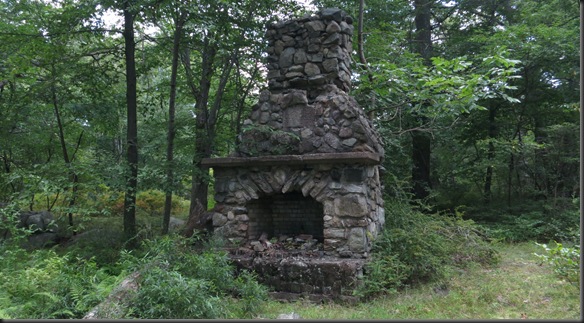
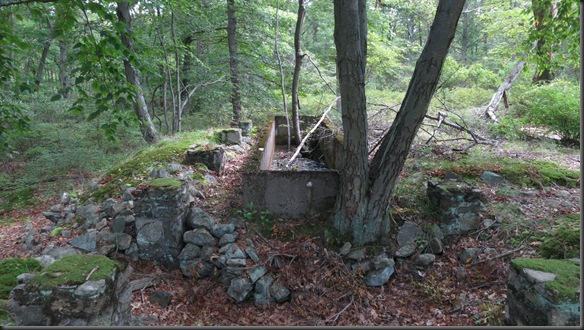
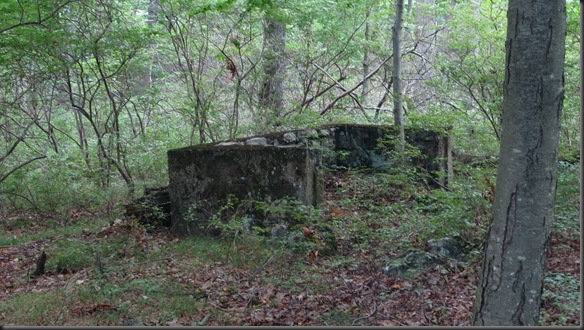
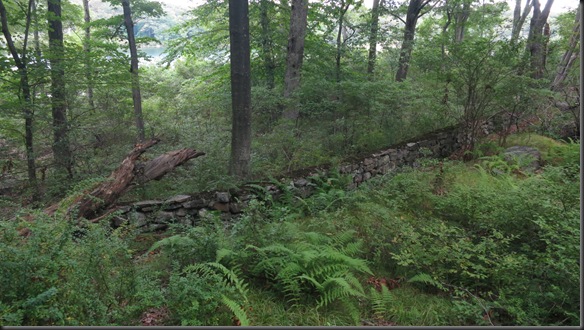
Unfortunately, all of this following of unmarked paths and looking for ruins, got me completely turned around. I had lost sight of the lake, and without realizing it had completed a good size semicircle, actually moving back west from where I had come. At this point I decided that it would be too difficult to try to follow the lake. I decided to backtrack to the north side of the lake and follow a path that ran there. This turned what was supposed to be five miles of backpacking on the first day into about seven miles. There was no time to waste. I just pushed along until I got to the area where I had intended to camp for the night. I only stopped for a bit near a small stream to fill up with water.
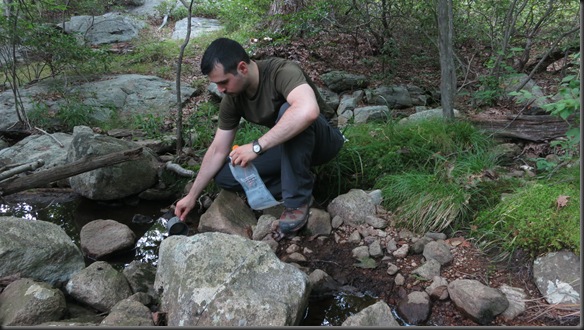
The area where I wanted to camp for the night was over the other side of a mountain. When I passed over the peak, it was one of the first good views I was able to get that day.
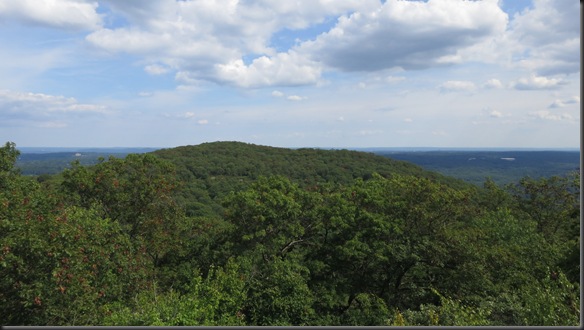
I set up camp, and got the fish cooking.
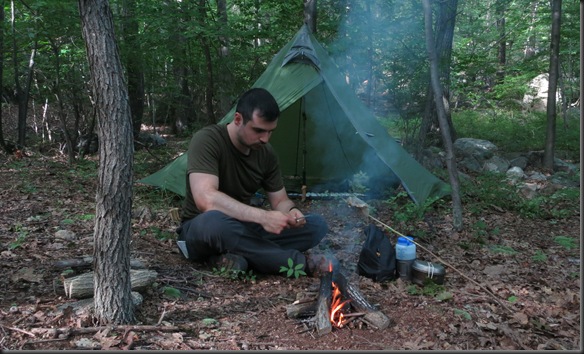
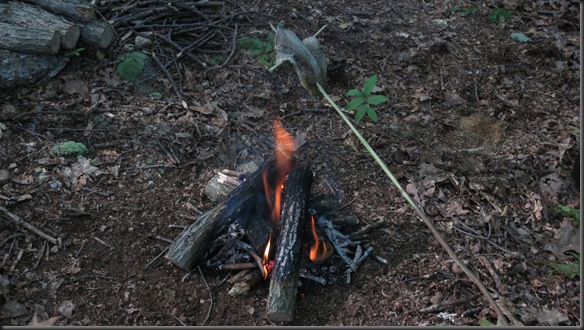
I also made my usual instant mashed potatoes, and finished a few snacks I had left over from earlier that day.
When the sun went down, I went to sleep. The next morning I fired up the stove and made some oatmeal. I didn’t want to start the fire back up again because I didn’t want to waste water putting it out when I was done.

After breakfast I headed back. As I was leaving, I noticed an unmarked path that was cutting across in the direction I intended to go-the north side of the lake. I decided to follow it instead of the trail. I figured worse case scenario, I would have to bushwhack until I reached the trail along the lake. I was in luck however, and eventually this path intersected the Red trail, which I needed to reach the lake. It appears that a bear had the same idea.
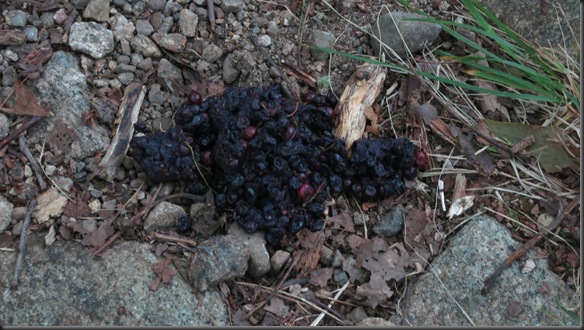
… and some more frogs…
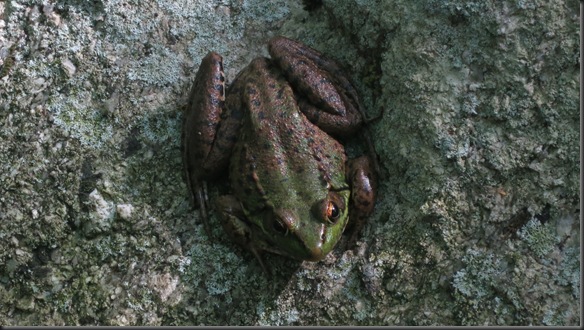
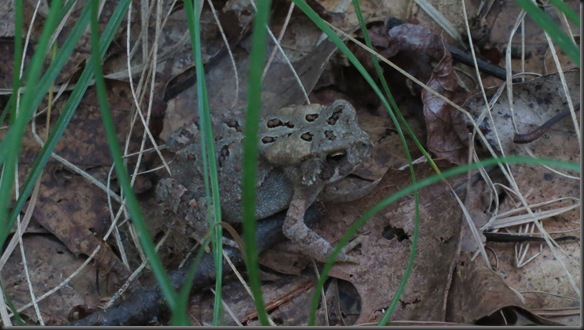
Eventually I reached the north side of the lake. This time i was able to slow down and look around. There were much better fishing locations here, and the coast was easily accessible.
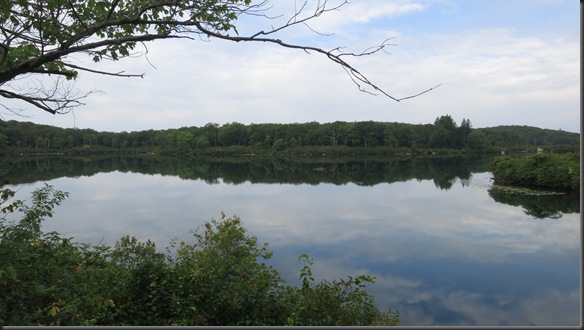
By the side of the trail you could see the ruins of the actual pump house, along with some other structures.
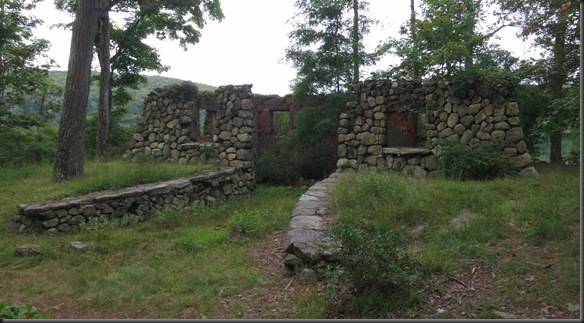
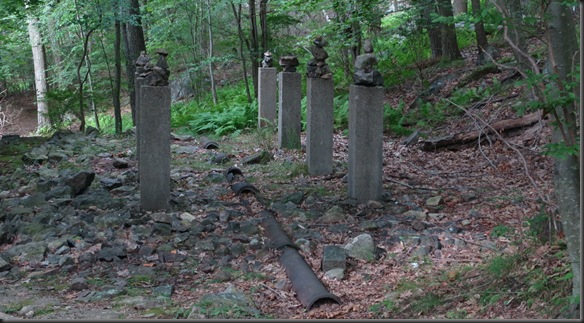
After that it was just a matter of making my way out. The overall trip ended up being twelve miles.
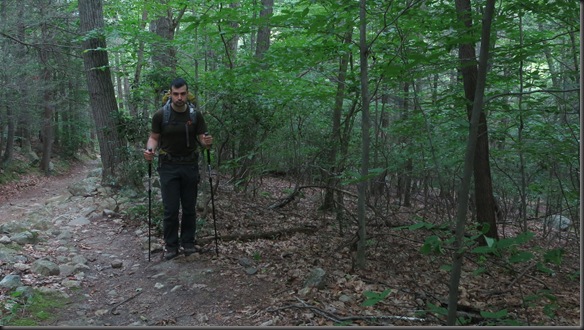
I was using a new GPS unit on this trip, the Garmin eTrex 20. I’m still trying to learn how to use it. I was able to record the track, but wasn’t able to get a picture of the full elevation profile.
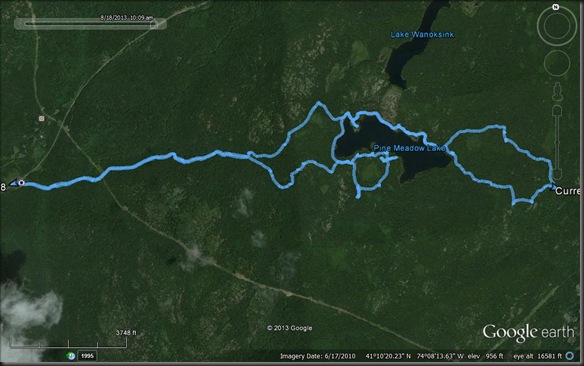
The trip was great. Other than getting turned around a few times, there were no difficulties. There were however some interesting gear developments. Recently I have cut down the weight and size of some of my gear, most notably my cooking kit and my sleeping bad (I’m using the NeoAir XTherm now). As a result, my 62L backpack now sits almost a third empty, without me even using any of the pockets. For this trip I ended up taking my REI Revelcloud puffy jacket just so I can fill up some of the room. The extra space will be welcomed during winter when I have crampons and other gear to fit in, but right now, the pack seems to large. I’ll have to think of something.

